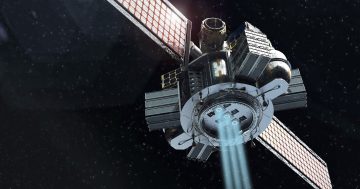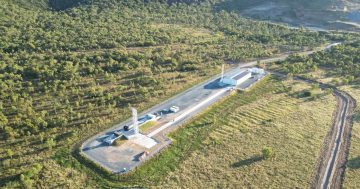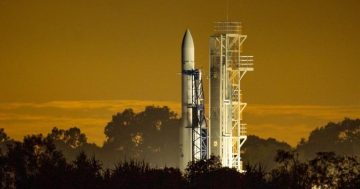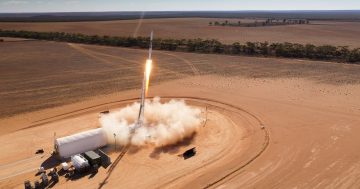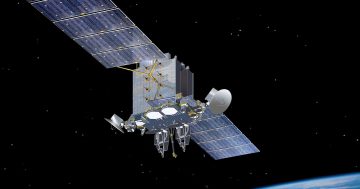The International Space Station will meet its watery demise in roughly nine years’ time. Belinda Smith* explains why is it being intentionally crashed into the ocean and what will replace it.
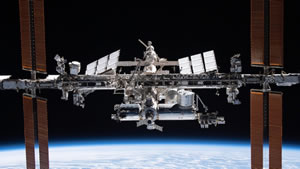 The clock is ticking for the International Space Station, with NASA last week declaring plans to let it plummet back to Earth in 2031.
The clock is ticking for the International Space Station, with NASA last week declaring plans to let it plummet back to Earth in 2031.
The iconic piece of space infrastructure will be nudged out of its orbit and eventually meet its watery demise when it plunges into the ocean and smashes into smithereens.
That day will mark the end of 32 years of space station construction, experiments, photography and — since November 2000 — continuous human habitation, all while hurtling around the planet once every 90 minutes or so.
On New Year’s Eve, NASA extended the space station’s operations from 2024 to 2030.
Given the space station’s decades of international cooperation — not to mention the cash needed to get it up and running (it’s the most expensive object ever built) — why will it be dragged down and destroyed?
And once it’s gone, what will take its place?
Why is the ISS being retired?
The space station’s international focus has been a “wonderful thing in many ways”, says Duncan Steel, a space scientist at Xerra Earth Observation Institute in New Zealand.
The US and Russia announced plans to build it together in 1993, and Japanese, Canadian and European space agencies signed on later.
The first segment of the space station, the Zarya Control Module, launched aboard a Russian Proton rocket from Baikonur Cosmodrome, Kazakhstan in 1998.
Tonnes of parts have been added, removed and replaced over the years since.
“But,” Dr Steel says, “it was never the idea that the space station would be permanent.”
This is partly because, quite simply, it’s gunking up and wearing out.
It’s not just humans living on board.
Bacteria, fungi and other microbes survive and thrive there too.
“Imagine living in a caravan, and you couldn’t open the windows, but you have to keep it clean,” Dr Steel says.
“There’s colonies of bacteria inside the space station which we don’t necessarily see, but you could expect to cause all sorts of problems.
“When there’s so much recycled air … it can get into the electronics and so on.”
The outer surfaces are becoming worn too.
The space station orbits about 400km above Earth’s surface.
Any objects below about 500km naturally fall back to Earth, so the space station is regularly boosted up to counter this effect.
This means there’s not too much in the way of space junk in the space station’s path (it’s not completely clear, though).
But what is plentiful at 400km up is oxygen atoms.
They comprise about 96 per cent of the atmosphere in low-Earth orbit.
“Oxygen atoms are very strongly oxidising, and the space station is flying around 7.8km per second through this very tenuous atmosphere of oxygen atoms,” Dr Steel said.
“And that’s actually corroding the outside.”
Docking and undocking of vehicles ferrying supplies and people to and fro can put strain on the space station’s structure, and various cracks and leaks have been patched up over the years.
The constant maintenance and upkeep needed to keep the station in working order and support inhabitants is expensive, so doing away with the space station will save plenty of cash.
For instance, NASA estimates savings “to be approximately $1.3 billion in 2031, ramping up to $1.8 billion by 2033”, which is money that could be put towards efforts “to explore further and faster into deep space”.
How will the ISS come down and where will it land?
The space station’s descent won’t be a random tumble back to Earth.
Once the space station is emptied and stripped of whatever needs to be saved, operators on the ground will control its descent using thrusters, gradually putting it on course for its eventual crash.
Its final resting place will be submerged in a patch of water dubbed the spacecraft cemetery (more formally called the South Pacific Oceanic Uninhabited Area).
Hundreds of spacecraft have plopped in this zone, which is the furthest location from any land.
January 2031 is roughly when it will all kick off, but exactly when the operators will begin their descent manoeuvres is still up in the air.
And it all really depends on what the Sun is doing at the time.
When it’s active, sunspots and flares erupt from its surface, and Earth’s atmosphere gets warmer and expands.
If the denser lower atmosphere puffs up past 400km, the space station must deal with more drag, and it drops faster.
“This causes objects to re-enter the atmosphere and the space station is especially prone to that,” Dr Steel said.
What will take its place?
The International Space Station is the only fully operational and habitable space station up there at the moment, but it wasn’t the first, and it certainly won’t be the last.
Dwellers of the spacecraft cemetery include remnants of the old US space station Skylab, plus a handful of Soviet space stations that were launched in the 1970s and 80s, including the world’s first modular space station, Mir.
Russia, which has built and operated one side of the International Space Station, plans to develop and deploy its own enterprise — the Russian Orbital Service Station — in five or six years’ time.
According to Russian news agency TASS, NASA and Roscosmos are still in talks about International Space Station operations until 2030, and whether Russia will still be involved.
A space station already under construction is the Chinese Tiangong, the first part of which launched in April last year.
(It’s the third Chinese space station — the nation launched Tiangong-1 and Tiangong-2 in 2011 and 2016 respectively — but this latest iteration is the first to have a modular design.)
China has never been a part of the International Space Station.
In 2011, US politicians passed the Wolf Amendment, which all but barred cooperation between NASA and Chinese organisations, citing human rights and national security concerns.
But other agencies, such as the European Space Agency, have worked with China and continue to do so.
So what about NASA?
With its sights set further afield to deep space, the US space agency is funding commercial partners and outsourcing its low-Earth orbit activities to companies such as Jeff Bezos’s Blue Origin and Lockheed Martin.
It’s already given Axiom Space permission to attach modules to the space station, which will eventually detach to become their own low-Earth orbit facility.
Enrico Palermo, head of the Australian Space Agency, says this new suite of space stations — particularly those from commercial operators — “presents a terrific opportunity for the Australian space sector”.
“Our industry will have a range of choices to suit their needs and fast-track their access to space, which will ensure our research and development opportunities are maximised.”
*Belinda Smith is the online science reporter in the ABC RN science unit.
This article first appeared at abc.net.au.


